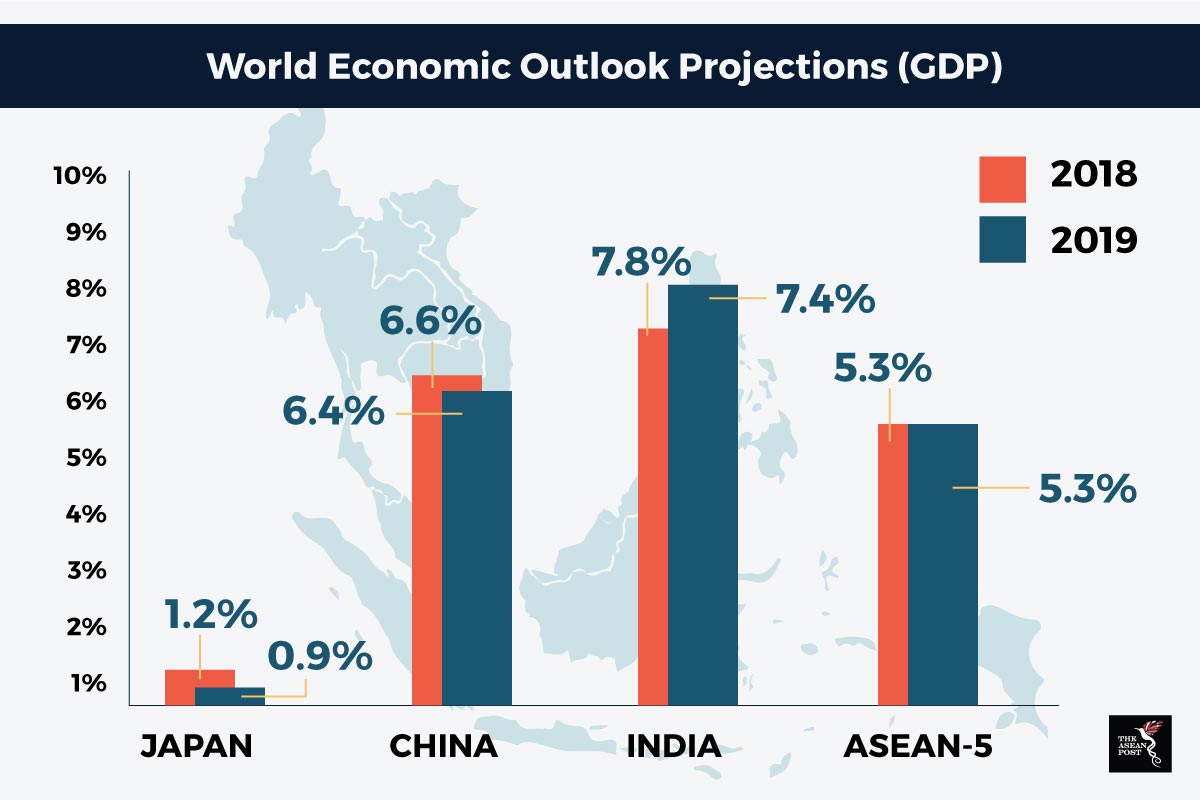The global economy has continued to strengthen in 2018 and this trend is expected to continue into 2019 as well. The International Monetary Fund (IMF) has said that some 120 economies, which accounts for three quarters of the world’s GDP, “…has seen a pickup in growth in year-on-year terms in 2017”.
Countries like Germany, Japan, Korea and the United States also saw higher growth in the third quarter of 2017 as opposed to the projection made in October 2016. This shows a global upsurge in the economy over the past year.
According to IMF’s World Economic Outlook update, the “…global output is estimated to have grown by 3.7 percent in 2017, which is 0.1 percentage point faster than projected in the fall and 0.5 percentage point higher than in 2016. The pickup in growth has been broad based, with notable upside surprises in Europe and Asia. Global growth forecasts for 2018 and 2019 have been revised upward by 0.2 percentage point to 3.9 percent.”
Some reasons behind this growth include commodities and inflation as well as improved exchange rates and capital flows. For example, some emerging market currencies such as the renminbi has appreciated by around 2 percent while the Malaysian ringgit has rebounded by about 7 percent on an improved growth outlook and stronger commodity prices, and the South African rand by close to 6 percent on perceptions of reduced political instability.

Source: World Economic Outlook Update, January 2018
How about ASEAN?
“Growth is expected to moderate gradually in China (though with a slight upward revision to the forecast for 2018 and 2019 relative to the fall forecasts, reflecting stronger external demand), pick up in India, and remain broadly stable in the ASEAN-5 region,” the report added.
It has also has raised its growth forecast for the five countries of ASEAN which includes Indonesia, Malaysia, Thailand, Vietnam and the Philippines to 5.3 percent this year, up from its previous estimate of 5.2 percent.
As for 2019, the IMF said it will keep the 5.3 percent forecast for the ASEAN-5 (as stated above) even as it increased its projection for “emerging and developing Asia” growth to 6.6 percent by one percentage point.
Policies for advanced, emerging and developing economies
In order to keep the economic growth momentum going, the IMF suggested two policies that are needed by all the economies. The first policy states the “need to raise potential output growth.” This can be done through structural reforms and by enhancing labour force participation rates in the country.
As a second policy, the need to increase resilience was highlighted. Some steps that should be taken by advanced, emerging and developing economies include proactive financial regulation and, where needed, balance sheet repair and strengthening fiscal buffers.
The policy poses challenges for developing, low-income countries, which most of the ASEAN countries fall under - are particularly complex, as they involve multiple, sometimes conflicting goals.
“These include supporting near-term activity; diversifying their economies and lifting potential output to maintain progress towards their Sustainable Development Goals; building buffers to enhance resilience, especially in commodity-dependent economies grappling with a subdued outlook for commodity prices; and tackling high and rising debt levels in many cases,” the report added.
ASEAN must keep up
Maintaining this positive shared future is definitely achievable. Christine Lagard, Managing Director of IMF has asserted that in order to do so, policymakers would need to take “…steps to boost long-term growth, paying down debt in places where it is too high, and in other places, investing back into the economy through infrastructure and effective social spending.”
Since the economy is a shared global responsibility, Christine stressed the importance of international cooperation to tackle problems such as corruption, improving the international trading system, tax evasions and focusing on climate change issues. Apart from that, the growth also needs to be more inclusive – such as providing training for workers who are to be displaced by automation, opening new opportunities for the younger generation as well as increasing the number of women in labour force participation.
ASEAN should take these steps as a bloc to bolster the region’s economic growth. Once the economy sustains momentum, ASEAN will be better placed to deploy all its proposed blueprints in areas like healthcare, education and the environment.
Recommended stories:
